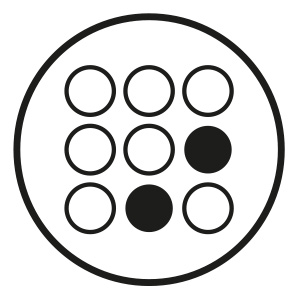SLS Nylon Care Guide
Your parts have arrived! What’s next?
Here is our guide on how to make the most of your 3D printed prints from 3DPRINTUK.

Powder
Our cleaning procedure during standard post-processing means that finding powder residue on your parts is greatly reduced. In the unlikely event that you do find a small build up of powder in a corner somewhere or a small amount of powder coming off the print when you touch it, this is nothing to worry about. Any excess powder can be easily removed with a little soap and water. You can use a coarse brush if you want it really clean. The material may feel porous but it is only the outer 0.2-0.3mm that will retain any moisture and this will dry out very quickly.

Blocked Holes
We print and clean thousands of models daily and go out of our way to make sure holes are cleaned out of powder. Even with this level of care, every so often, some parts do get by us with blocked holes. The powder should come loose if you give it a poke with a needle or something similar. Long thin holes can be a bit stubborn and in some cases designing in a ‘drain’ type hole half way along the part can aid in getting the powder out. In the studio we use modellers drill bits and airbrush needles which work great especially for smaller holes.

Keep it Clean!
Our prints are used for a variety of functions. In some cases the parts need to stay as white as possible. Oil and dirt can seep into the outer layer of the print but most dirt will come off with some soap and water. If the parts need to stay white and you are not treating it post print, then our advice would be to keep it away from anything that will stain.
For machine parts most of our clients go for our carbon black finish so that wear and tear is not obvious.

Can the parts be Smoother?
Short answer – yes. We offer two in-house post-processing options to improve surface smoothness. The first is a free industrial vibratory polishing service. It turns the finish from that of an Extra Strong Mint to a Softmint. The second service is automated shot peening, which incurs an additional charge. Shot peening is a blasting process that greatly improves the surface finish and can accommodate low, medium, and high volumes without affecting tolerances. You can request either of these finishes when you place your order.

Finishing
White is boring! We hear you… and to this end we offer a colour part dyeing service post print. The process produces a solid colour (black / carbon black / red / blue / yellow / green) that does not add thickness to the part and is more durable than a painted finish. However, if you require a complex / multiple colour finish you can use water based acrylic paints or fabric dyes. For a professional paint finish, our polishing service will ensure the surface is ready for paint.
If you want something special but don’t trust your own skill level why not try the team at Pango Studios who specialise in finishing 3D printed models.

Glueing Parts
Epoxy resin is the way to go. Araldite is the most common brand but there are cheaper alternatives out there if you have the time to look. Araldite is available in most hardware shops. Alternatively you can pick it up in Halfords. It comes in a variety of strengths and has a varied set-off time ranging from 1 to 20 minutes.
Super glue doesn’t work well at all. Even with the powdery layer removed, super glue seems to find its way into the outer most surface of the parts and does not adhere to the other object.
